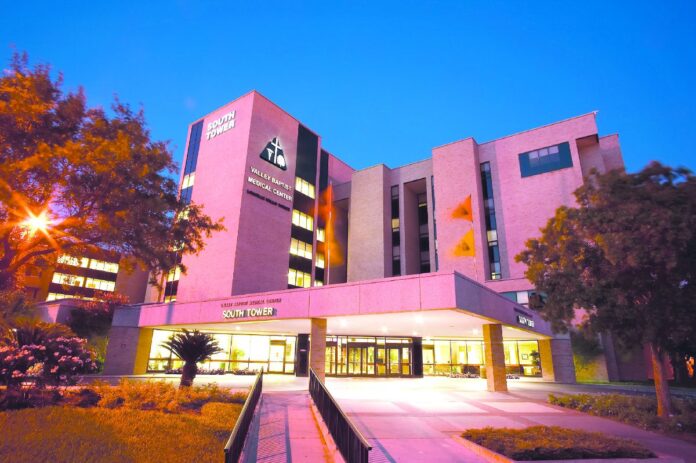“Breast cancer.”
“No.”
The denial comes from disbelief, and the disbelief arises from fears that lurk in the minds of many women. In spite of the fear, certainly — other women have had it, but not me?
This scenario has been experienced for real by thousands of women. They don’t want to believe it’s happening, but then they hear those dreaded words, “Surgery, chemotherapy, radiation … ”
The Breast Center at Valley Baptist Medical Center–Harlingen is one place where women can get the diagnosis early and increase their chances for survival. The Center has numerous pieces of equipment to perform a mammogram to check for breast cancer.
But mammograms aren’t what they used to be. These days, the Breast Center has all sorts of high tech equipment. That equipment and the procedures that go with it — breast ultrasound, digital mammography — help determine the exact nature of the disease.
And the right treatment to go with it.
“In the facility we have three digital mammography units, one of them with 3D capability,” said Jose Govea, director of radiology services.
“A mammography unit with 3D capability allows the radiologist and the physicians interpreting the image the ability to peak around potential pathologies,” he said.
Quite an advance from the not-so-distant past.
“Before, when someone would have a routine mammogram, they’d (radiologists, physicians, technologists) see a spot or a shadow,” he said. “With a 3D mammo we’re able to gauge how deep it is. Is it something that’s solid or is it one dimensional? We’re able to gauge its uniformity and its complexity.”
So a checkup with a modern mammogram seems to have clinched it. Or does it? Remember, every case is different, every patient is different — and so equipment has evolved to meet those differing needs.
“Breast ultrasound, it’s an ultrasound that’s focused just on the breast tissue and serves as a complement to mammography images,” Govea said. “So again, if some suspicious tissue is identified on a mammogram, ultrasound helps to further clarify it. It helps clarify suspicious tissues.”
And another piece of equipment allows medical personnel to perform a stereotactic biopsy.
“That’s when a patient does need a biopsy of suspicious tissue,” Govea said. “The stereotactic biopsy table allows us to perform that in maximum comfort with the patient lying down. This allows the radiologist easy access to the breast tissue in order to perform the biopsy, which is where we remove a small sample of tissue. We’re one of the few that offer it in the area.”
None of this would be possible without the people who run the equipment, read the findings, and work directly with patients who are fearful of the results.
“We have technologists who actually walk the patient through the procedure,” he said. “They position the patient and they operate the machinery. They acquire the images that are then interpreted by the radiologists, by a board certified radiologist.”
And it’s all in one central area.
“It’s the same group of ladies that do the mammograms, they do the breast ultrasound and they do the biopsies,” he said. “These radiologists live in the area, they’re from the area and everything is contained within the Valley Baptist system.”
It seems the health care community is persistently advancing its level of care with new training, procedures and equipment.
Valley Baptist Medical Center
Valley Baptist Medical Center is constantly seeking ways to improve services. Jose Govea said the Breast Center hopes to acquire a breast MRI within the next year.
“It’s able to capture images of the breast in a different way that helps us identify and mark pathologies with a sensitivity that supports findings that are identified in mammography. They work in conjunction, so we find something in the mammogram we either clarify, validate or even improve on the findings in the MRI.”
Jose Govea, director of radiology at the Breast Center at Valley Baptist Medical Center.





